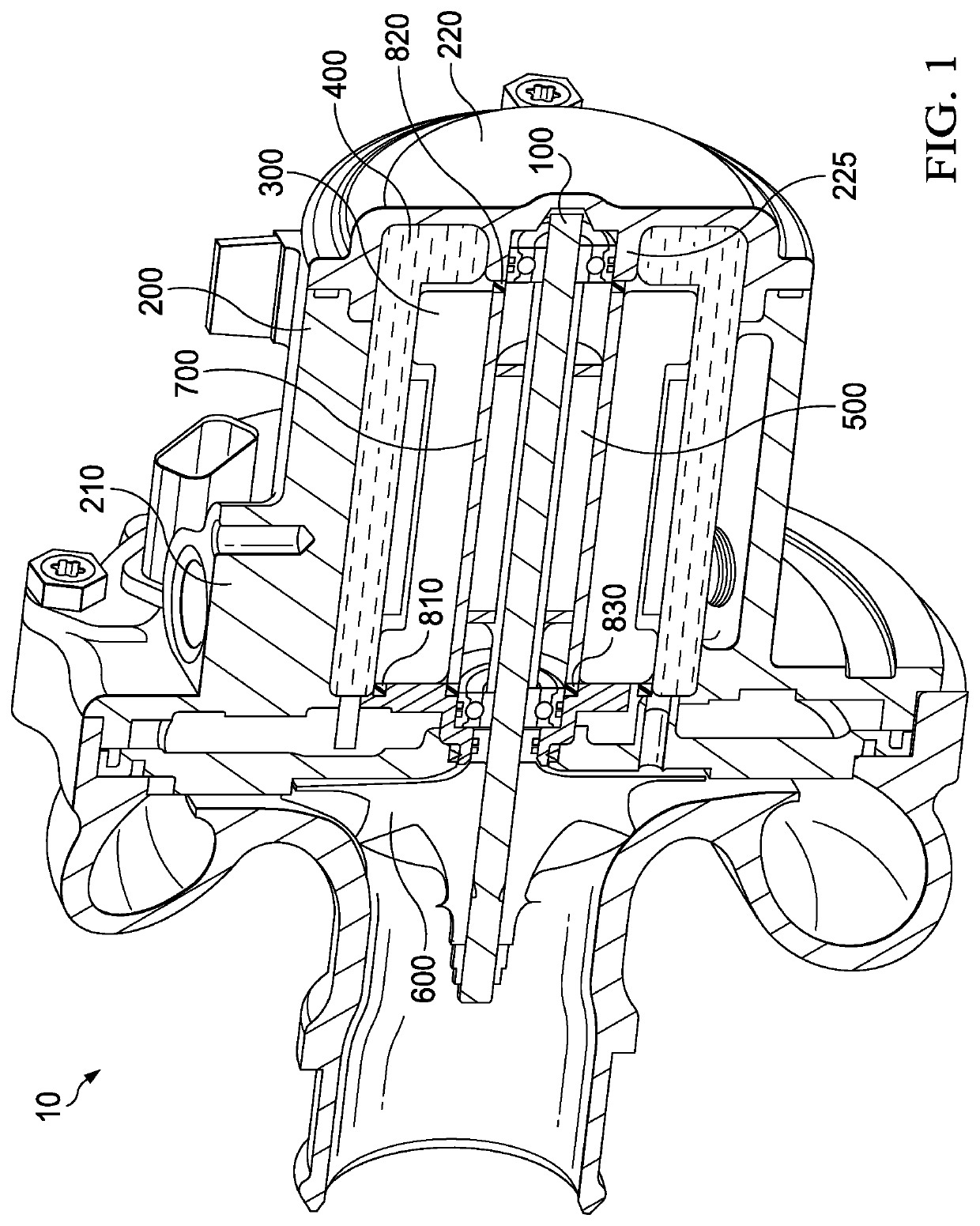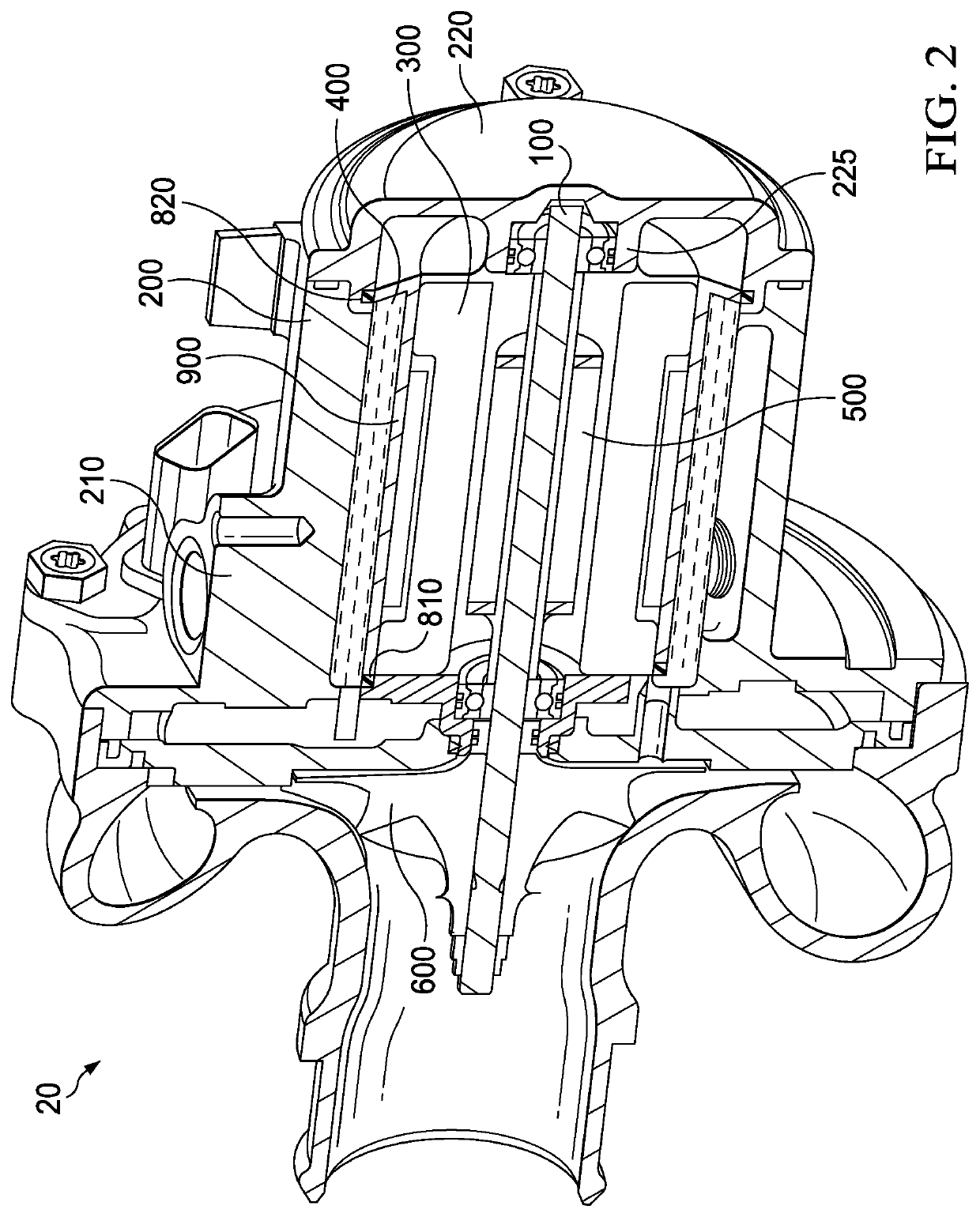Electric charging device with fluid cooling
a charging device and internal combustion engine technology, applied in the direction of liquid fuel engines, machines/engines, mechanical equipment, etc., can solve the problems of affecting the effectiveness and efficiency of exhaust gas turbochargers, components heat up strongly, and the rotation rate or performance of components is dependent, so as to facilitate the cooling efficiency of stators and reduce material costs , the effect of small design
- Summary
- Abstract
- Description
- Claims
- Application Information
AI Technical Summary
Benefits of technology
Problems solved by technology
Method used
Image
Examples
second embodiment
[0030]FIG. 2 shows charging device 20 according to the invention. Charging device 20 has in turn a shaft 100, a compressor wheel 600 arranged on shaft 100, a stator housing 200, and a stator 300. Charging device 20 also comprises a rotor 500 arranged on shaft 100 and a cooling channel 400 extending axially for accommodating a coolant. In contrast to the embodiment of FIG. 1, charging device 20 of FIG. 2 does not have a split tube. A separation tube 900 is arranged for this purpose between stator 300 and stator housing 200 so that cooling channel 400 is formed in the radial direction between separation tube 900 and stator housing 200. In an alternative embodiment, separation tube 900 and additionally split tube 400 shown in FIG. 1 may be provided.
[0031]In charging device 20 of FIG. 2, it is advantageous that an efficient cooling of stator 300 is likewise facilitated, as the coolant is separated from stator 300 only by thin separation tube 900. In addition, stator housing 200 may be p...
third embodiment
[0036]the charging device, which is not shown in the figures (reference numerals for correspondingly identical components will be retained in this case for better understanding), may likewise have a shaft 100, a compressor wheel 600 arranged on shaft 100, a stator housing 200, and a stator 300. The stator in turn has windings and sealing compound. In addition, the charging device comprises rotor 500 arranged on shaft 100 and an axially extending cooling channel 400 for accommodating a coolant between stator housing 200 and stator 300. A first seal 810 is provided in the axial direction between stator housing 200 and a first end (proximal with respect to compressor wheel 600) of stator 300, and a second seal is provided in the axial direction between stator housing 200 and a second end (distal with respect to compressor wheel 600) of stator 300. In contrast to the other embodiments, there is no separation tube and no split tube, and the seals are arranged on both sides directly betwe...
PUM
 Login to View More
Login to View More Abstract
Description
Claims
Application Information
 Login to View More
Login to View More - R&D
- Intellectual Property
- Life Sciences
- Materials
- Tech Scout
- Unparalleled Data Quality
- Higher Quality Content
- 60% Fewer Hallucinations
Browse by: Latest US Patents, China's latest patents, Technical Efficacy Thesaurus, Application Domain, Technology Topic, Popular Technical Reports.
© 2025 PatSnap. All rights reserved.Legal|Privacy policy|Modern Slavery Act Transparency Statement|Sitemap|About US| Contact US: help@patsnap.com


